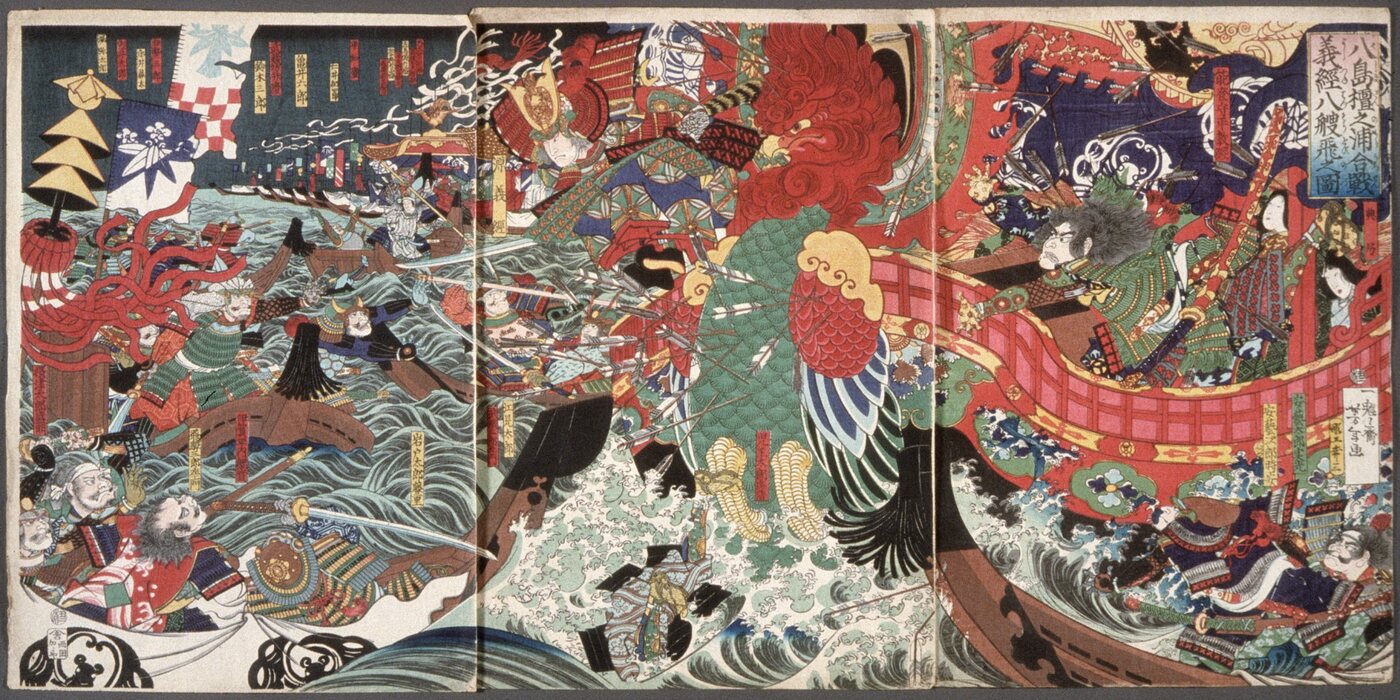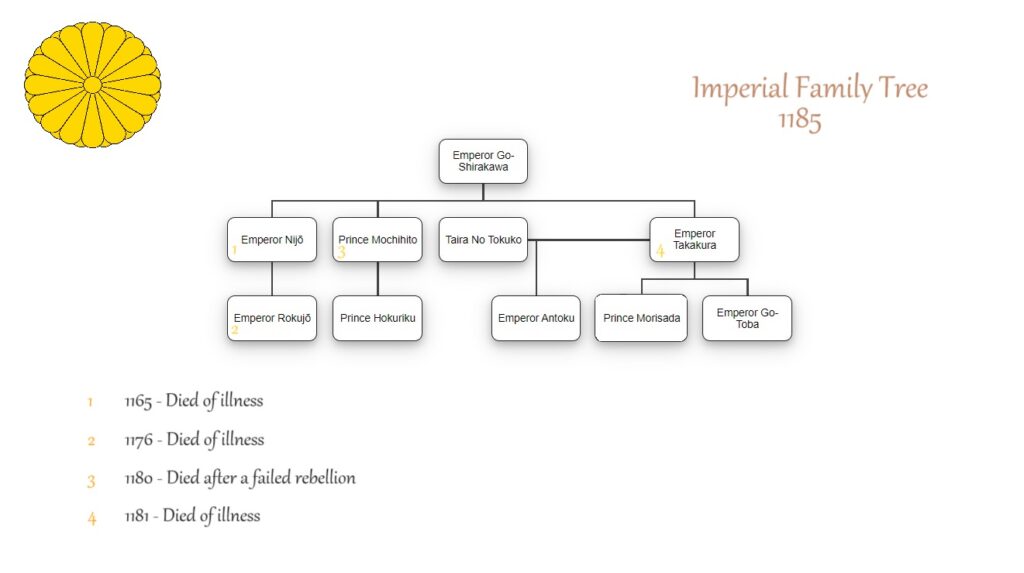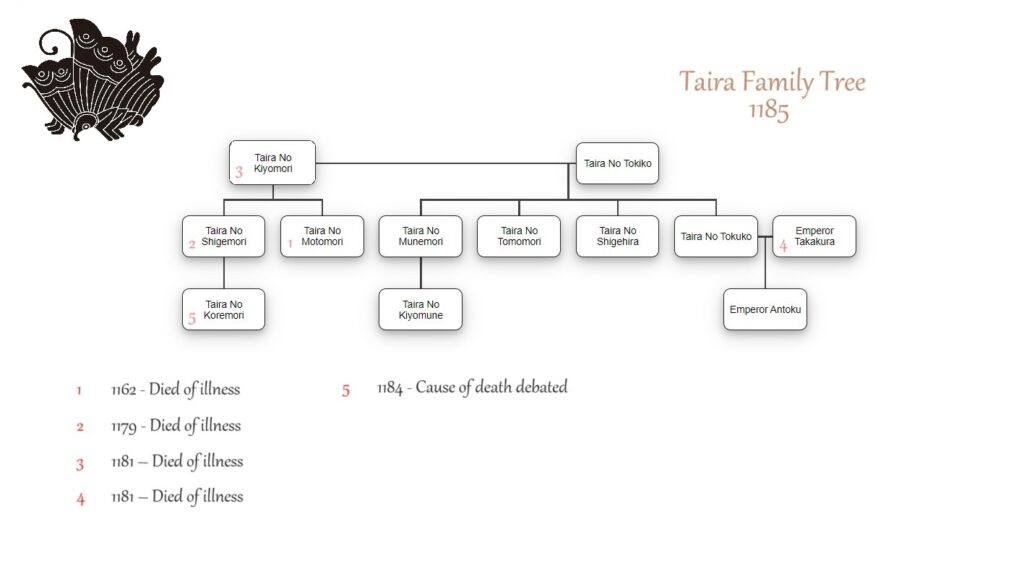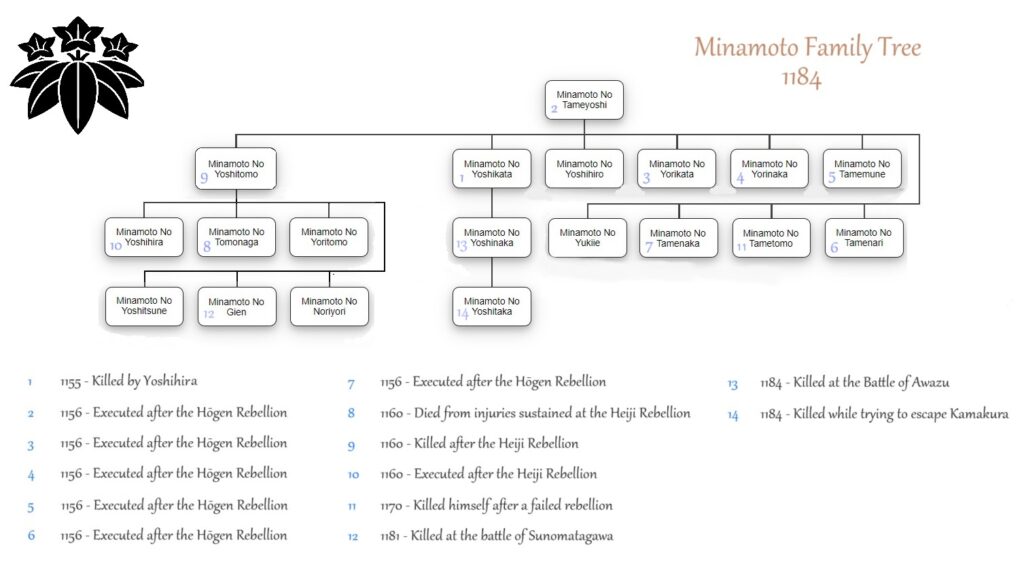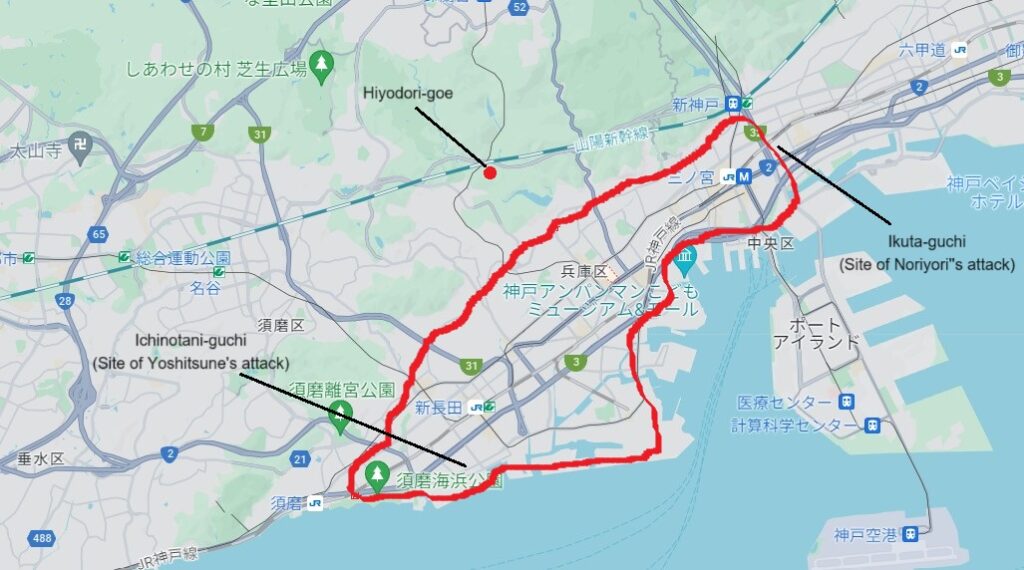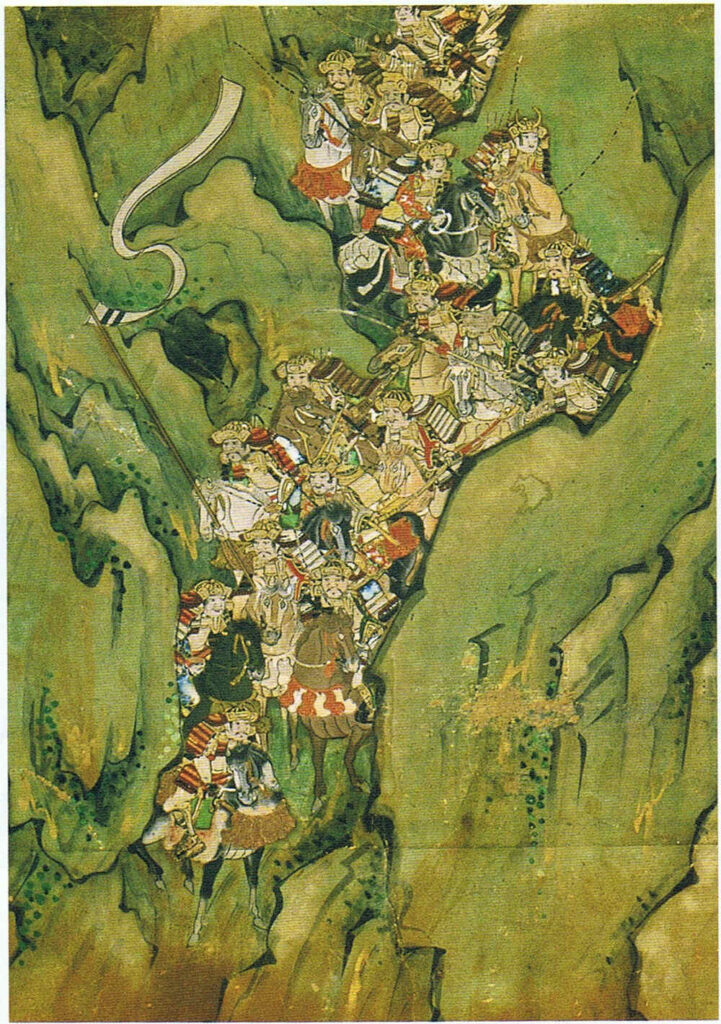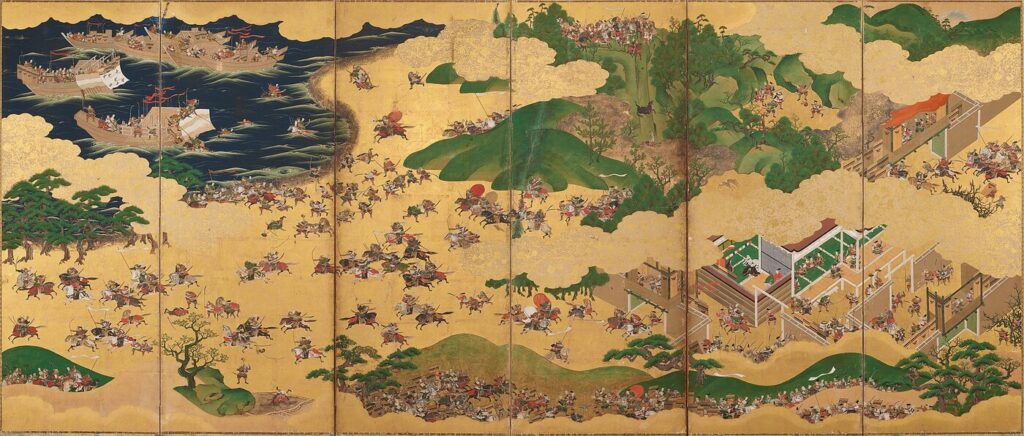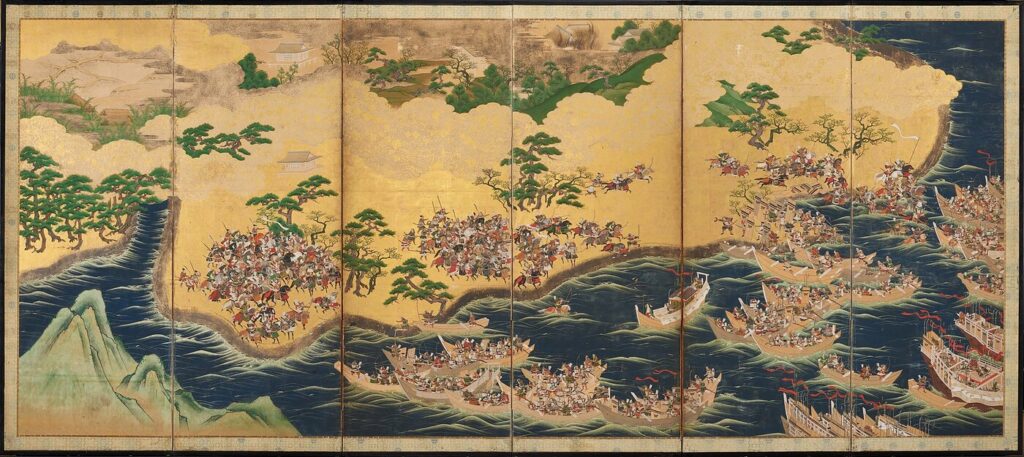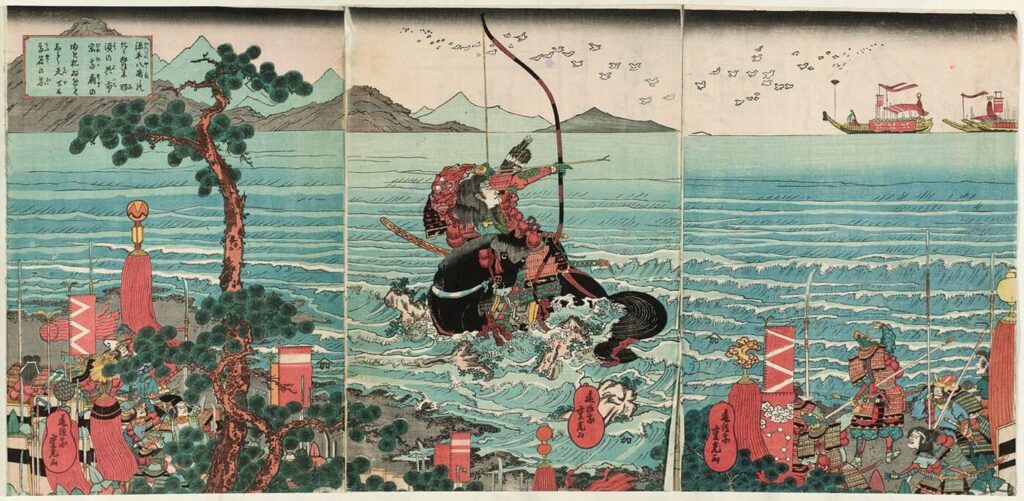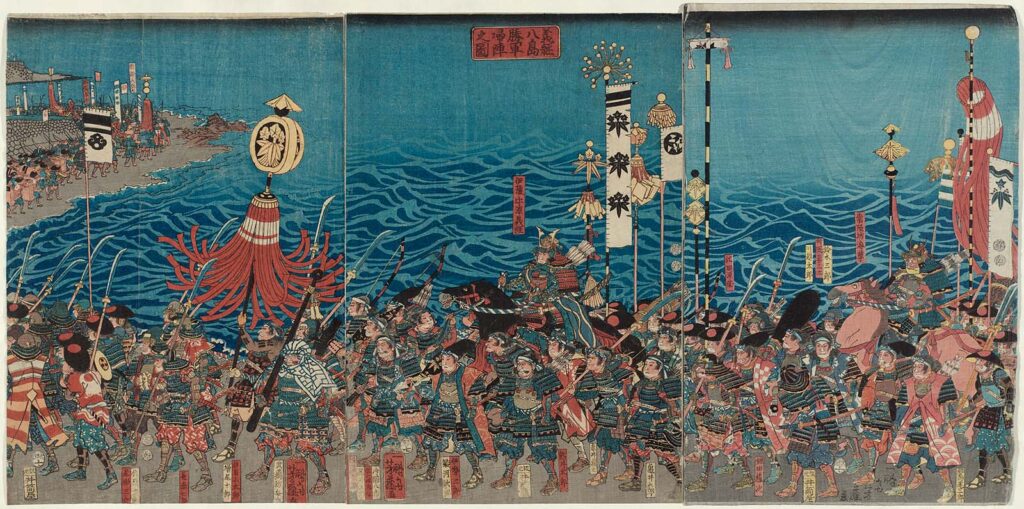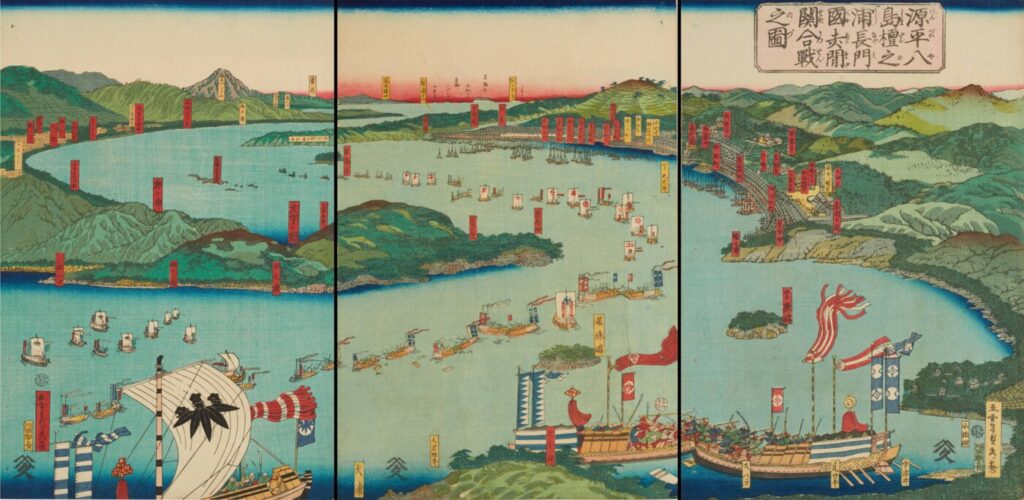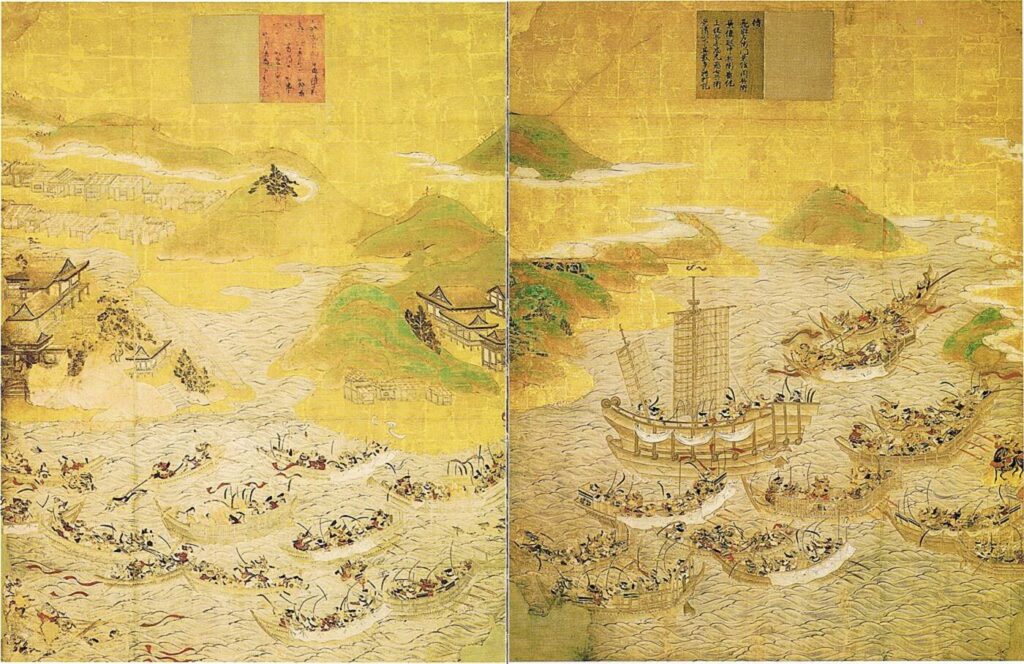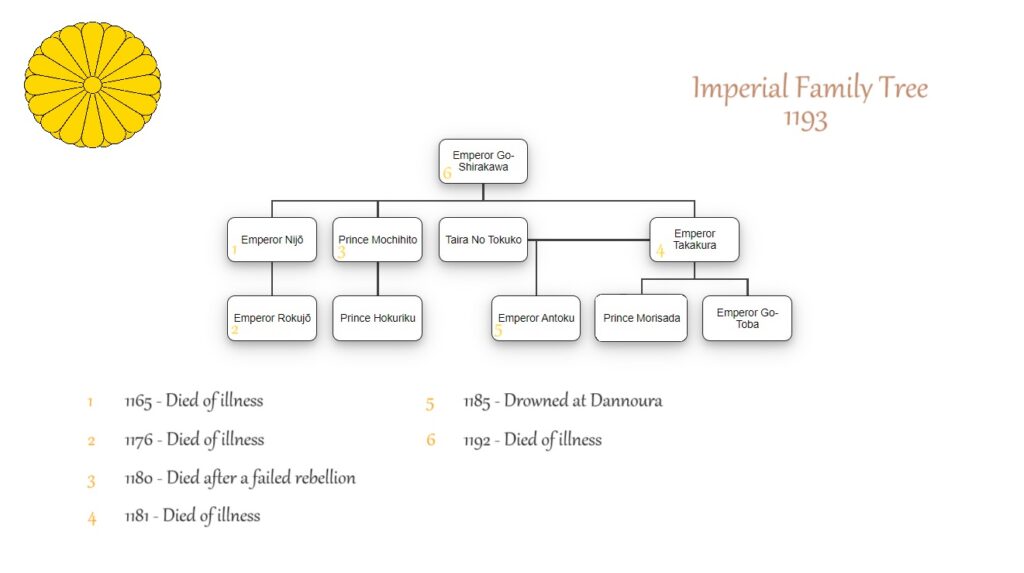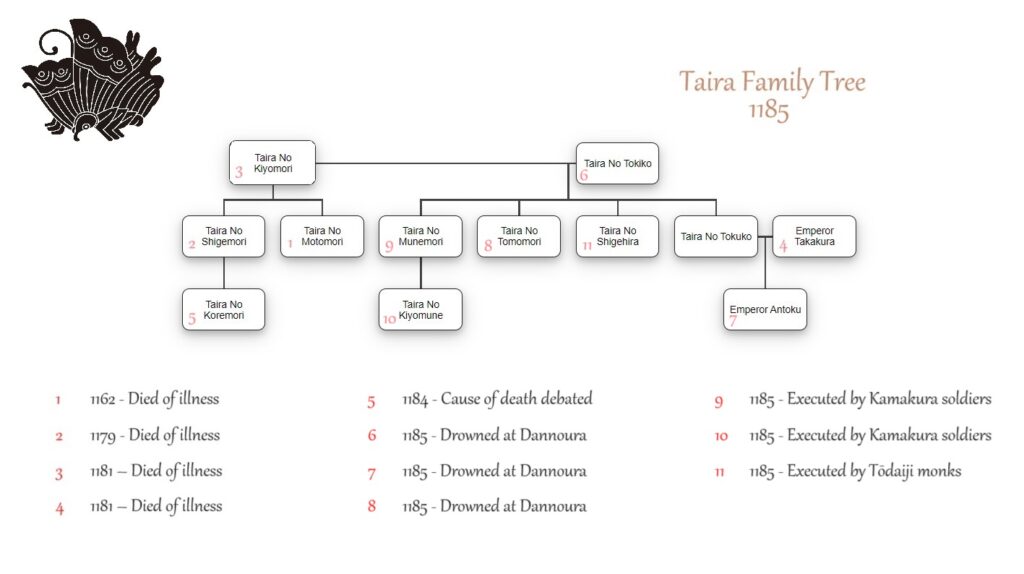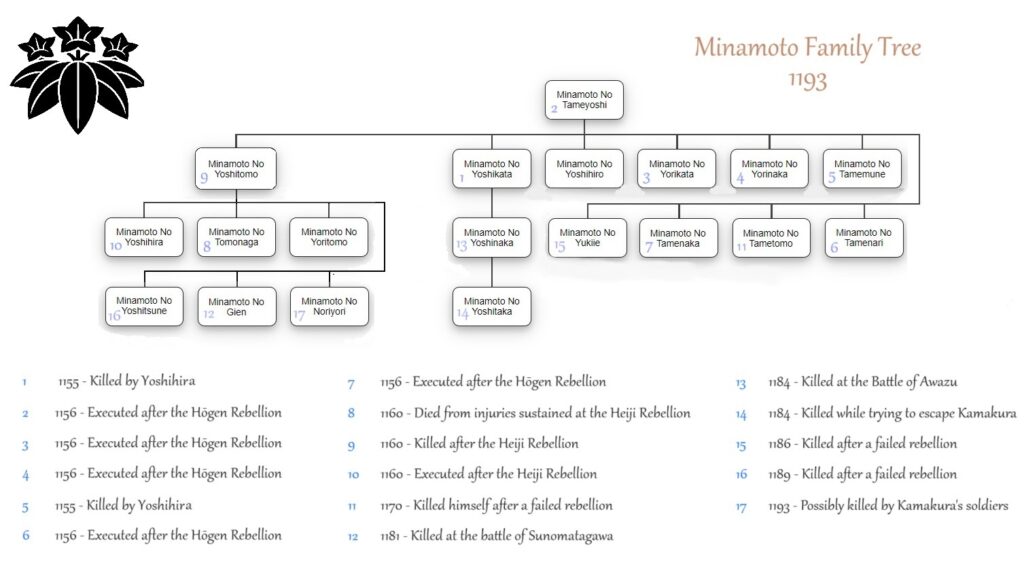The Genpei War pt. 4
Congratulations on making it to the fourth and final part of this summary of the Genpei War. We’re on the home stretch now. Just three battles to go—arguably the three most epic battles of the entire war. The sheer number of ukiyo-e paintings depicting them is testament to that fact. What is it about them that makes them so epic? One word… Yoshitsune. Yoritomo’s legendary younger brother is finally getting tagged into the Genpei War! After we finish studying his accolades, we’re going to take a look at what happened to everyone who survived the Genpei War. As always though, if you haven’t yet read through the previous parts, If you haven’t read parts one or two or three, go back and do so, or you’ll have little idea what’s going on. go back and do so. If you have already read through them, please read on! Map and family trees are provided as always to ease your comprehension.
The Battle of Ichinotani
Part three concluded with the death of Yoshinaka. While the Minamoto were busy chasing him out of the capital, the Taira were busy rebuilding their army in the west. They established a fortress in Fukuhara—a port town in the province of Settsu which, for a short time, had served as the capital under the command of Kiyomori. In the time it took the Kamakura army to defeat Yoshinaka, the Taira had succeeded in both securing control of the naval routes for the entire western coast and in subduing the majority of the provinces west of the capital. By January of 1184, they’d amassed an army of 30,000.
In order to slow the Taira’s efforts, Minamoto no Noriyori led an army of 56,000 to the western border of Fukuhara. Yoshitsune led 10,000 men to the north of the fortress and fought off the various scattered Taira troops stationed around the area. Go-Shirakawa sent a messenger to Fukuhara shortly before the Minamoto army’s departure ordering them to stand down. He assured them the Minamoto wouldn’t attack and recommended they form a peace treaty with Yoritomo. This convinced the Taira they were safe for the foreseeable future and lulled them into a false sense of security.
Hiyodori-goe
The Taira’s new fortress was huge, spanning a 9-mile long stretch of land west to east. The plan was to have Noriyori attack from the east while Yoshitsune travelled north around the perimeter and flanked the enemy from the west. However, after taking out the Taira’s troops to the north, Yoshitsune formulated a new, bolder plan: he handed the bulk of his army to two of his leading men and set off with just 70 soldiers on horseback to an area known as Hiyodori-goe, a dangerously steep mountain slope overlooking the enemy base.
His plan was to lead his men down the slope and launch a stealth attack, taking out as many of the Taira’s soldiers as he could before they were able to realise what was happening. But was it really possible to lead a 70-man cavalry down a slope that steep? A local man they met on the path explained to them that deer often made the journey in winter to look for food, but there was no way a horse could pull it off. Yoshitsune tested this theory by throwing two horses down the mountain. One survived. In the young warrior’s eyes, this was a success. Having proven his hypothesis, he led his men down the perilous slope.
Whether or not this story actually happened, I have not embellished this account of the story in any way. Word for word, this is how it played out according to the Tale of the Heike! However, as Hiyodori-goe is located 5 miles from the site of Yoshitsune’s subsequent attack, many researchers believe that he either descended the mountain via a smoother, more traversable path to the west, or that the story is fiction.
The storming of Fukuhara
Upon reaching the foot of the mountain, Yoshitsune spread chaos among the Taira ranks, setting fire to nearby buildings and slaughtering any man in his path. Confused and unprepared, the Taira’s soldiers fled to the ocean, scrambling for any boat they were able to throw themselves into. Noriyori’s troops were enjoying similar success, having broken through the Taira’s defences and invaded their fortress. The sheer magnitude of the Minamoto army was enough to send them scraping for their boats. Many drowned in their attempts. Among the fleeing masses was Taira no Shigehira, Kiyomori’s fifth son and the man responsible for the burning of Kōfukuji and Tōdaiji. His horse took an arrow to its side, forcing it to collapse and awarding the Minamoto a powerful hostage.
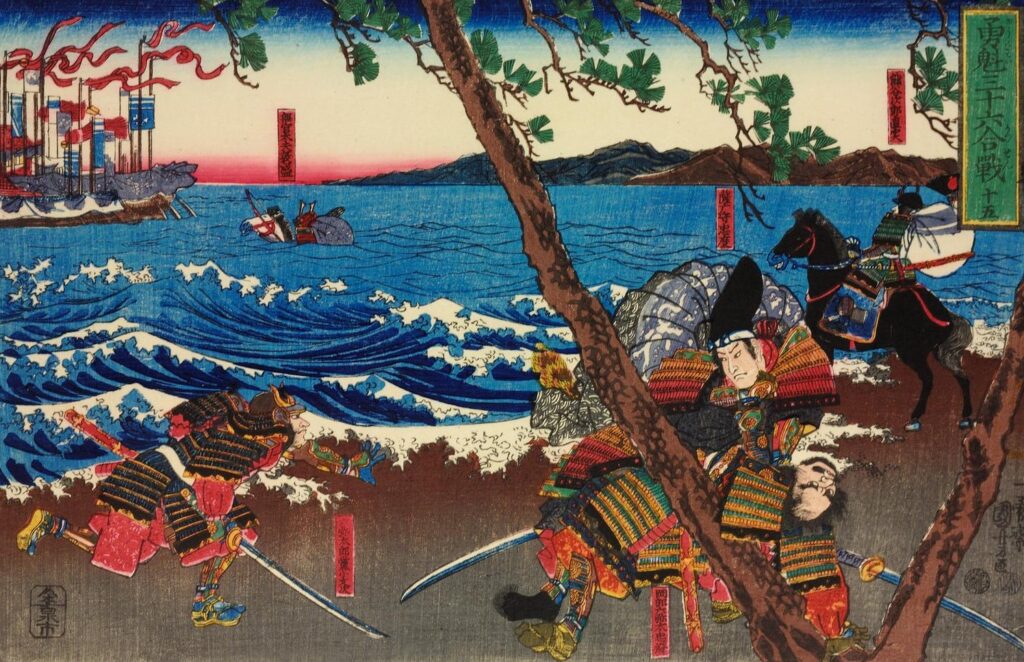
Munemori—Kiyomori’s third son and commander of the Taira army—led those who survived to Yashima, an island to the south in the province of Sanuki. When the remaining stragglers had all either died or fled, the Minamoto troops returned to the capital.
| Taira | Minamoto | Kiso |
|---|---|---|
| 4 | 4 | X |
A Brief Respite
After giving the Taira a little time to cool off, Go-Shirakawa sent a messenger to Yashima to negotiate the return of Former Emperor Antoku and the three treasures in exchange for Shigehira. However, by this point, Munemori’s trust in the retired emperor was non-existent; his broken promise that the Minamoto would not attack Fukuhara proved that he was not a man of his word. Munemori made no attempt to negotiate with or even contact Go-Shirakawa again.
This left the court with no choice but to support Yoritomo’s vendetta against the Taira if they were to have any hope at all of retrieving the treasures. And so, the Kamakura army remained in the capital to maintain order while their leader came up with a plan of action. The main problem facing both the court and the Minamoto was their lack of ships. The Taira’s fleet was still healthy, affording them control over the Inland Sea. If they were to take down their enemy, Kamakura would need a new, powerful ally with a large number of ships at his disposal.
The Taira had the opposite problem: as many ships as they could ever hope for but no men to fill them with. They would have to find new allies with strong armies if they wanted to stay in the Genpei War. A short period of peace ensued as both sides tackled their respective problems.
Noriyori’s Deployment
The respite ended in July, when Taira sympathisers in Ise, Iga, and Ōmi decided to launch a small-scale rebellion. While in the end it consisted of nothing more than a handful of sporadic battles, it brought about the death of one of Yoritomo’s most loyal men. Yoritomo and the court agreed that Yoshitsune should remain in the capital to maintain order and prevent any further rebellions while Noriyori led an army of 30,000 out west to target the Taira’s allies.
Noriyori’s campaign started out well. He advanced his army to the far west, where he set about taking out Taira bases in Kyūshū. A few months in, however, the lack of ships combined with decreasing food supplies was starting to take its toll. He sent correspondence to Kamakura requesting assistance. In January of 1185, after much persuasion, Go-Shirakawa allowed Yoshitsune to rejoin the Genpei War.
The Battle of Yashima
Since leaving the capital in 1183, the Taira had made Yashima their new base of operations. They built a makeshift palace for Emperor Antoku and permanently stationed a number of soldiers to protect him while they travelled to nearby provinces in search of new allies. Now, having lost Fukuhara, Yashima was their new frontline. Yoshitsune decided that rather than travel all the way west to aid his brother, he would drive the Taira away from Yashima, force them further west and have Noriyori advance east to conduct a pincer attack. Before doing any of that though, he needed ships. Yoshitsune travelled to Settsu, Kī and Iyo, where he recruited a number of new allies with powerful fleets. They all gathered together in Settsu in February.
Yoshitstune’s Legendary Naval Voyage
Only a small stretch of sea stood between the Minamoto army and Yashima. Unfortunately, though, a storm broke out on their planned departure date. Kajiwara Kagetoki(who, if you’ll remember back, rescued Yoritomo at the Battle of Ishibashiyama) advised they wait for more favourable weather. Yoshitsune insisted they could brave the storm. In the end, he threatened a number of navigators. into taking charge of five of the fleet’s ships, and led 150 men through the storm while an indignant Kagetoki waited behind at the port with the rest of the fleet. Under normal circumstances, the journey should have taken 3 days. Yoshitsune made it across in just four hours! (No doubt the figure is slightly exaggerated, but the fact it was exaggerated alone suggests he shaved an impressive enough amount of time off the journey to warrant a story in the Tale of the Heike.)
The Battle Commences
They arrived at the island early in the morning. Yoshitsune found some local samurai who were willing to explain Yashima’s situation to him. He learned that the Taira had scattered their fleet around a number of islands. Normally, 4,000 soldiers protected Yashima, but 3,000 of them were currently in Iyo fighting the Kamakura army’s new allies. With only 1,000 soldiers stationed on the island, the time was ripe for an attack.
After giving his men half a day or so to recover, Yoshitsune advanced on the Taira, leading his small army towards the enemy’s main base. When they neared the area, he had his men set fire to the local villages and erect a number of the Minamoto clan’s flags, giving the impression his army was vastly larger than it actually was. The Taira, who had been expecting an invasion from the sea, weren’t ready for the small army. Panicked, they leapt onto their ships and took off into the water. After they calmed down and assessed the situation, however, they realised just how small the enemy’s numbers were. With renewed confidence, they slowly approached the shore, positioning themselves in range for an archery showdown.
The battle continued on and off for the rest of the day, both sides simply buying time until their reinforcements arrived. When night fell, they called a temporary truce and agreed to resume fighting in the morning. When they awoke, the battle resumed as planned, but at a much slower pace than that of the previous day. Each side put in the smallest amount of effort necessary to convince the other that they weren’t just stalling until their allies could make it to the battle.
Nasu no Yoichi
As the action ground to a halt, one noblewoman attached a fan to the top of the pole protruding from the end of her ship. This was a challenge Yoshitsune couldn’t back down from. He needed his best bowman to pierce that fan and prove to the Taira how great his army was. His men weren’t as motivated; no one was willing to accept the mission. Eventually, Yoshitune pushed the task onto a young man named Nasu no Yoichi. He prayed to the gods to give him the strength to pierce the fan and swore to take his own life if he missed. He readied his bow, drew it back, released the arrow and watched as it soared across the sea and shot straight through the middle of the fan, thrusting it from the pole. The flabbergasted Taira soldiers looked on amazed as it floated to the ship’s deck.
Both sides went crazy. Even the Taira were in awe of their enemy’s athletic prowess. One soldier close to the noblewoman picked up the fan and began to dance excitedly. For a brief moment, the two sides forgot they were at war. Yoshitsune remained rational though; he reasoned that if Yoichi’s arrow could reach that ship, a second arrow could reach the dancing soldier. He ordered Yoichi to fire again. Moments later, the soldier fell dead. The Taira couldn’t believe it. After taking a moment to return to their senses, the battle recommenced.
Reinforcements Arrive
As arrows soared over the sea, the Taira’s 3,000 or so reinforcements eventually arrived from Iyo and flanked Yoshitsune. The young leader sensed their attack and sent a small group of 15 men to fend them off. The Tale of the Heike states that these 15 men defeated the might of the Taira’s 3,000 soldiers(which calls into question the validity of everything else written in the text). Their reinforcements defeated and word having reached them of the impending Kamakura fleet, the Taira sailed their ships out west and abandoned Yashima. The following day, Kagetoki arrived with 140 ships, but the battle was already over.
| Taira | Minamoto | Kiso |
|---|---|---|
| 4 | 5 | X |
The Battle of Dannoura
Sailing West
Two months after Yashima, the Kamakura army was ready to sail its fleet far west to finish off the Taira, who had been forced back to their final stronghold, Hikoshima, in the very westmost part of Nagato province. Most of their allies situated between the small island and the capital had either surrendered to the Minamoto or switched sides. As for Kyūshū, Noriyori had succeeded in gaining control of the northmost part of the region, blocking the Taira’s only remaining escape route. Yoshitsune was finally ready to perform his pincer attack.
830 Minamoto ships made their way through the Inland Sea to Hikoshima. Taira no Tomomori—Kiyomori’s fourth son—led 500 ships away from the island for what would be the Taira’s final attack. One ship was significantly larger than the rest. It sailed conspicuously in the centre of the fleet. Normally, this ship would have carried Former Emperor Antoku, his mother, Prince Morisada and, most likely, the three sacred treasures. However, what it actually contained was a large number of concealed Taira soldiers poised with weapons and ready to attack the second their enemy boarded the ship. The Minamoto army’s objectives were hiding in a far less obvious location.
Yoshitsune’s ship led the fleet. Kagetoki warned him against being so close to the action, but between Yoshitsune’s gung-ho command approach and the fact he was still salty towards Kagetoki over the disagreement they had had before departing for Yashima, he had no intention of taking this advice. Besides, a large proportion of his army consisted of soldiers provided by newly-formed allies. He wasn’t about to let a bunch of newcomers take credit for the victory.
The Battle Commences
The battle commenced around noon. At first, the Taira had the upper hand, pushing forward as they fired a barrage of arrows at the Minamoto army’s ships. As the two fleets approached each other, soldiers began jumping onto one another’s ships, sparking close combat battle. After a while, the size of the Kamakura army combined with the fact its soldiers’ morale was high from their victory over the Taira at Yashima turned the tides of the battle. The Minamoto began slaying the Taira’s oarsmen—an act that was considered poor battle etiquette at the time. With no one to row their ships, the Taira fleet had no choice but to return to the western shore, where Noriyori’s men opened fire from the very northmost part of Buzen province on the Kyūshū side. Between the barrage of arrows and Yoshitsune’s blood-thirsty troops, the Taira realised they were fighting a losing battle.
Ni-i no Ama and Emperor Antoku
Around 4pm, Tomomori made his way to Emperor Antoku’s ship and began cleaning up the deck(at the very least, he didn’t want the Minamoto to think the Taira didn’t have the capacity to keep their royalty in good living conditions). When asked the situation by his mother, Taira no Tokiko—or Ni-i no ama, her Buddhist name, by which she had been referred to since her husband’s death—Tomomori explained rather sardonically that the Taira women would have to get used to lying with a very different calibre of men from that point on.
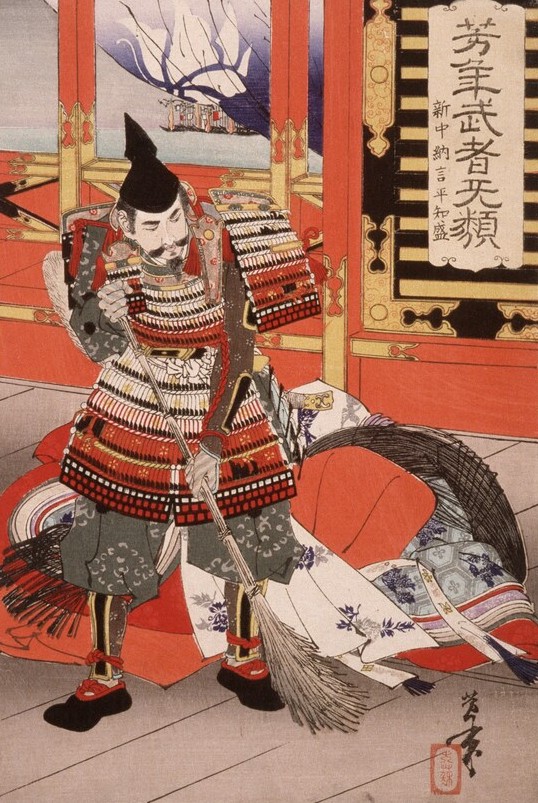
In that moment, Ni-i no ama knew there was no hope. She sheathed the sacred sword in her belt and picked up the box containing the sacred bead. In her other hand, she held her grandson, Emperor Antoku. She explained to him that they would be visiting another kingdom at the bottom of the ocean. Together, they jumped into the water and drowned. The other noblewomen on the ship followed suit. A number of them, Antoku’s mother included, were picked up by Minamoto soldiers and taken captive.
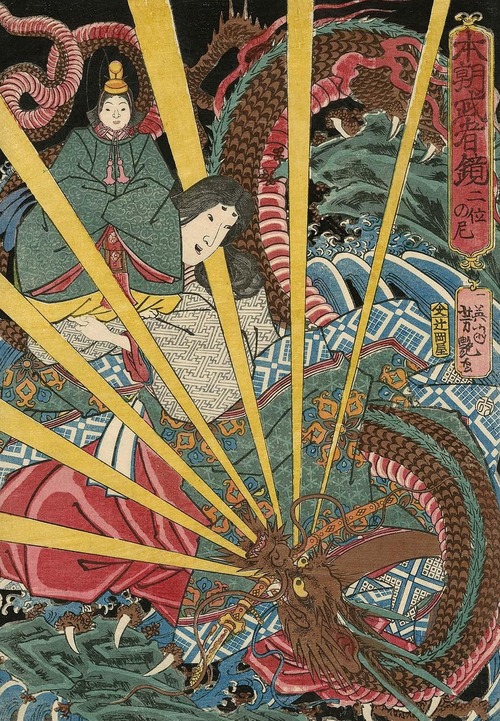
Taira no Noritsune
It slowly began to dawn on the Taira army that the battle was over. One by one, the remaining generals dived off their ships and sank to the bottom of the ocean. Only one man, Taira no Noritsune, continued fighting. Tomomori made his way to Noritsune’s ship and explained to him that they had lost the battle. By continuing to fight, he was only racking up more sins he would have to atone for in the afterlife. Noritsune was too pumped up to stop though. As a compromise, he decided on one final sin: Yoshitsune’s assassination. The battle may have been over, but at the very least, he could take down the Minamoto army’s commander.
Noritsune jumped from ship to ship until he tracked down his prey. Instantly, he pounced. Yoshitsune was more nimble than he’d accounted for, though; the young Minamoto leader sprung from ship to ship, evading his attacker until Noritsune finally ran out of energy and gave up. At that moment, three Minamoto soldiers ran at him, desperate for the opportunity to take down one of the enemy fleet’s top generals. Noritsune kicked the closest off the ship and grabbed the other two in his arms, allowing himself to fall back into the ocean with a grin on his face, happy in the knowledge that he wasn’t entering the afterlife empty-handed.
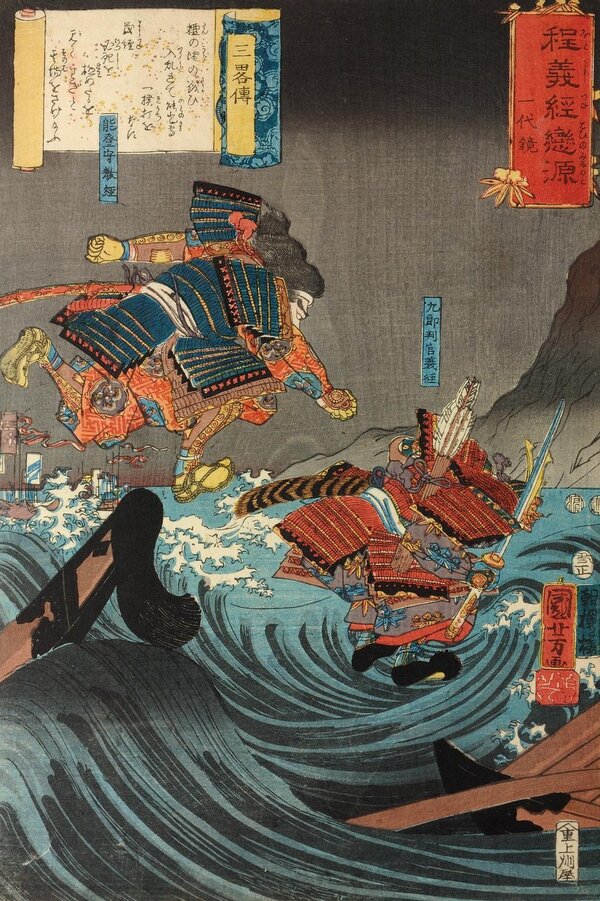
Tomomori watched as the crimson-red water swallowed up his brothers, nephews and cousins. When the last man was out of sight, he held his foster brother, Ienaga, and together they joined their family, ending the Taira, ending the battle, and ending the Genpei War.
| Taira | Minamoto | Kiso |
|---|---|---|
| X | 6 | X |
The aftermath
The Three Treasures
When the battle was over, Noriyori stayed behind at Dannoura to look for the three sacred treasures. He found the mirror on Former Emperor Antoku’s ship, and, luckily, the box containing the bead had floated up to the surface of the water. The sword, however, was lost for all time. Some argue that the real sword was stored at Atsuta Shrine and that the sword kept in the palace was a replica used only for ceremonies. If that’s true, the sword that exists today is the real deal. We may never know the truth.
The Taira
The final battle had left a huge Taira-shaped mess to clean up; not everyone had been able to successfully drown themselves. Those who survived had to be exiled or executed. Antoku’s mother and brother, Taira no Tokuko and Prince Morisada, received pardons on the condition that they live out the remainder of their lives in a temple and vow never to return to the capital.
Shigehira
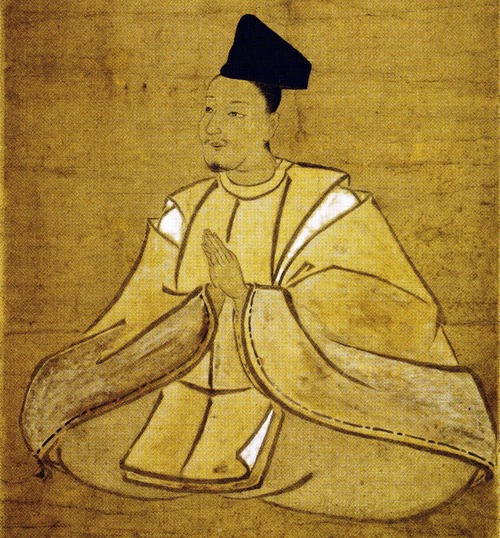
After his capture at Fukuhara, Minamoto soldiers escorted Shigehira to Kamakura, where he met with Yoritomo. Kamakura’s leader took an instant liking to Shigehira and arranged for him to receive the best treatment possible during his detainment. A personal maid attended to him at all times, and Yoritomo held banquets in his honour. But all good things must come to an end. When his time in Kamakura was up, Yoritomo’s men escorted Shigehira to Yamato and handed him over to the monks of Tōdaiji who, needless to say, still bore a grudge against him for what he had done to the majority of their complex. He was executed on June 23.
Munemori
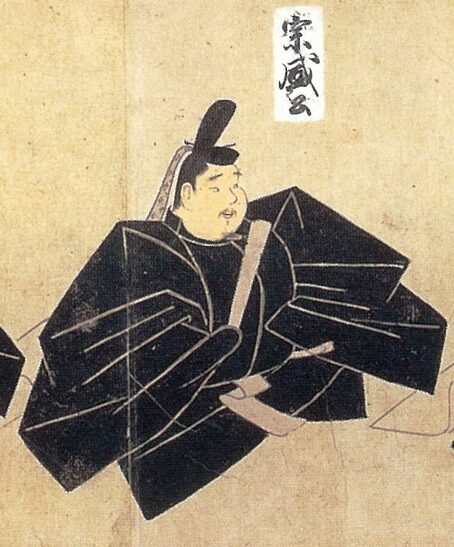
The Taira army’s commander, Munemori, wasn’t prepared to die in battle. He and his son made a bid to swim to shore but the enemy soon intercepted them. Yoshitsune led the two back to the capital. Upon his return, Go-Shirakawa awarded him and a number of his men positions within the court. Happy as Yoshitsune was to receive these positions, accepting them was a huge mistake; Yoritomo had specifically banned his men from receiving titles from the former emperor. For this reason, when Yoshitsune led Munemori and his son to Kamakura, he was refused entry.
Munemori was taken from Yoshitsune’s custody and led into Kamakura, where he pleaded for the lives of himself and his sons. This did little to impress Yoritomo—Shigehira had set the bar too high for any other member of the Taira clan. In all fairness, Munemori had never claimed to be a commander. He was a family man at heart, enjoying nothing more than spending time with his children. Fate had simply had other plans for him. The death of his father and older brothers had forced him to shoulder a weight he wasn’t prepared for mentally or emotionally. Regardless of the circumstances though, he would have to take responsibility for his father’s decisions. His bloodline ended on June 21.
The Minamoto
Yoshitsune
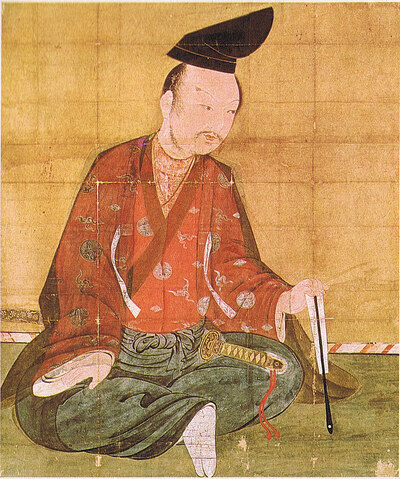
As for Yoshistune, despite having won his brother the Genpei War, Yoritomo wasn’t prepared to let him off with strengthening his ties to the court. Kagetoki had also sent a letter ahead of Yoshistune’s departure from the capital listing all the reckless decisions the young leader had made at Yashima and Dannoura. But perhaps greater than all other factors, Yoshitsune’s charisma coupled with the popularity he’d gained during his time in the capital were a threat to Yoritomo. After all, Yoritomo had simply sat back and watched the Genpei War play out from the comfort of his dwellings in Kamakura while Yoshitsune amassed an army and destroyed all the competition. If Yoshitsune were to suddenly find ambition, he wouldn’t have much trouble overthrowing his older brother.
Tensions frayed further after Yoshistune returned to the capital and refused to meet with Yoritomo’s messengers, his excuse being that he was too ill to see anyone. This really angered Yoritomo; he needed to use Yoshistune’s connections in the capital to track down their uncle, Yukiie, with whom he still bore a grudge due to the whole teaming up with Yoshinaka affair.
Ironically, Yoshitsune ended up teaming up with Yukiie and getting permission from Go-Shirakawa to take down his brother. Shortly after their small army left the capital, Yukiie strayed from the pack and got picked up by Yoritomo’s men. He received no mercy. As for Yoshitsune, his rebellion sparked a four-year war which forced him to have to flee further and further north until he took refuge with the Northern Fujiwara. Harbouring a fugitive gave Yoritomo the excuse he needed to send the Kamakura army north and destroy the final clan standing in the way of him having control over the entire country. Yoshitsune died in battle in 1189.
Noriyori
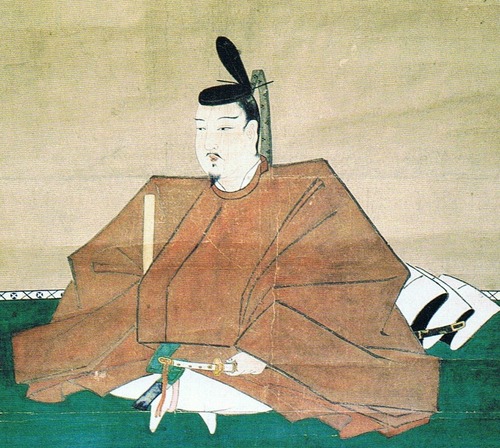
In 1193, Yoritomo left Kamakura to go on a hunting trip. While he was away, a small rebellion broke out. It ended quickly and with minimal damage, but when it was over, Minamoto no Noriyori made the mistake of approaching Yoritomo’s wife and assuring her that if anything like that were to ever happen again, she could count on him to take care of the situation. Naturally, she relayed these words to her husband, who took it to mean that Noriyori was plotting against him.
All attempts made by Noriyori to clear his name only raised further suspicion for Yoritomo, who had already made his mind up. Noriyori knew there was no longer any place for him in Kamakura. After he left, he disappeared from history. Texts written over 100 years after his departure claim he was hunted down and killed by Yoritomo’s men, but the Azuma Kagami contains no information regarding his death.
Yoritomo

And so just a matter of years after the Genpei War ended, Yoritomo stood alone as the sole survivor, his most powerful enemies and the greatest threats within his family all having perished. The only person left able to prevent him usurping power from the court was Go-Shirakawa. Shortly before his death, the retired emperor awarded Yoritomo and his generals increasingly prestigious titles while being careful not to grant them enough power to overthrow the court. However, just four months after his death in 1192, the reigning emperor, Go-Toba, caved to Kamakura’s pressure and awarded Yoritomo the title of Sei-i-Taishōgun.
Yoritomo had spent the last seven years creating agreements with samurai clans spread out across the country, and he had even managed to receive permission from Go-Shirakawa to relocate a large number of them to land owned by members of the court, thus creating a strategic network of samurai that allowed him to keep tabs on developments occurring all over the country. In short, he had established a shōgunate. And now, having been awarded the title of Sei-i-Taishōgun, his domination was official. Of course, this network relied on samurai clans’ willingness to enter into an agreement with him. Many chose not to, especially those in the west, who had had very little contact with Kamakura except for the final few months of the Genpei War, and were still loyal to the court. It would take the shōgunate a further thirty years to get these clans under their umbrella.
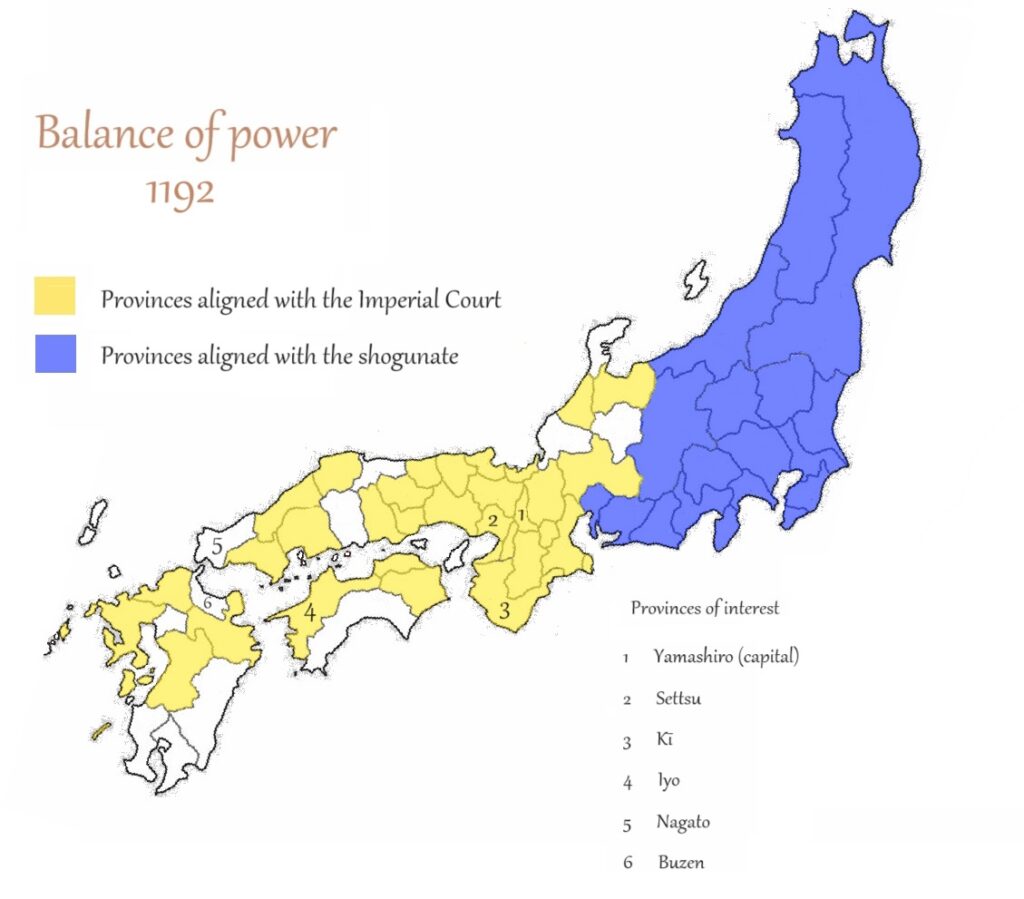
Conclusion
With over five years’ worth of events to study, the Genpei War is a complicated topic which has had historians debating for centuries. As I hinted at several times, conflicting reports make it difficult to know exactly what happened. However, by taking into account when each report was written and who it was written by, we can determine which are the most valid. Regardless of its details, however, there are two things we know for certain about the Genpei War: the reason it started and its consequences. At the end of the day, these are what really matter when studying a war—everything that happens in between is just entertainment.
When I first started writing about the Genpei War, I naively thought I could sum it up with three medium-length articles. I ended up going way over my estimation! My only regret though is that despite having gone over my target, I still haven’t explained even half the details I’d planned on including! I may write other articles about the various people, events and battles that made up the Genpei War, but I think I’m done with the Heian era for a good while now. I need to take a break and maybe study something more relaxing—the history of haiku perhaps.
If you want to study the Genpei War further, keep in mind the validity of anything you read. You may discover that tales of incredible feats have been exaggerated or even made up, but if you learn to have an appreciation for history, you’ll find the underlying truth of these events to be just as incredible. For all of you who stuck with this series to the end, as a small reward, I offer you this map of the location of the Genpei War’s most famous battles. Enjoy!


